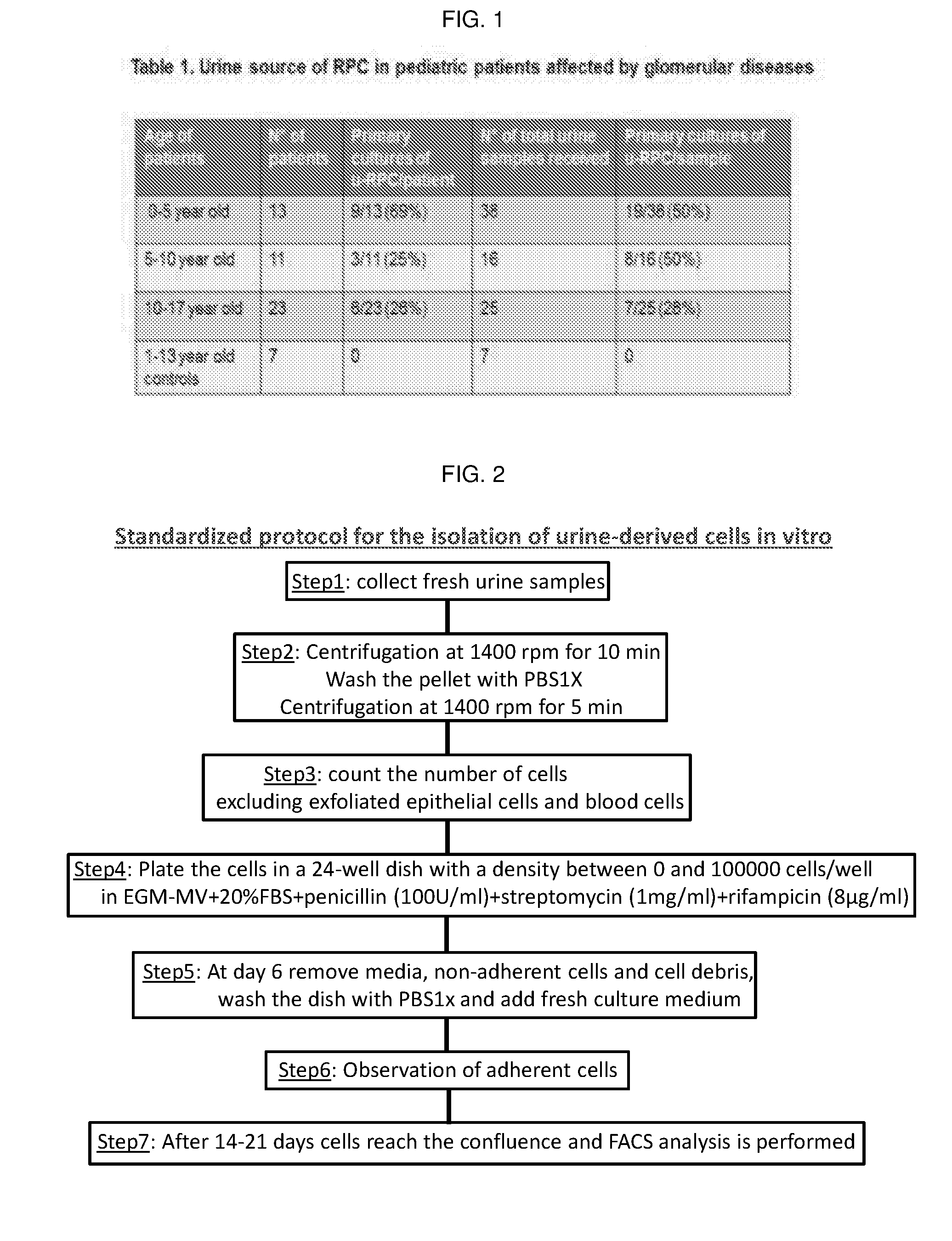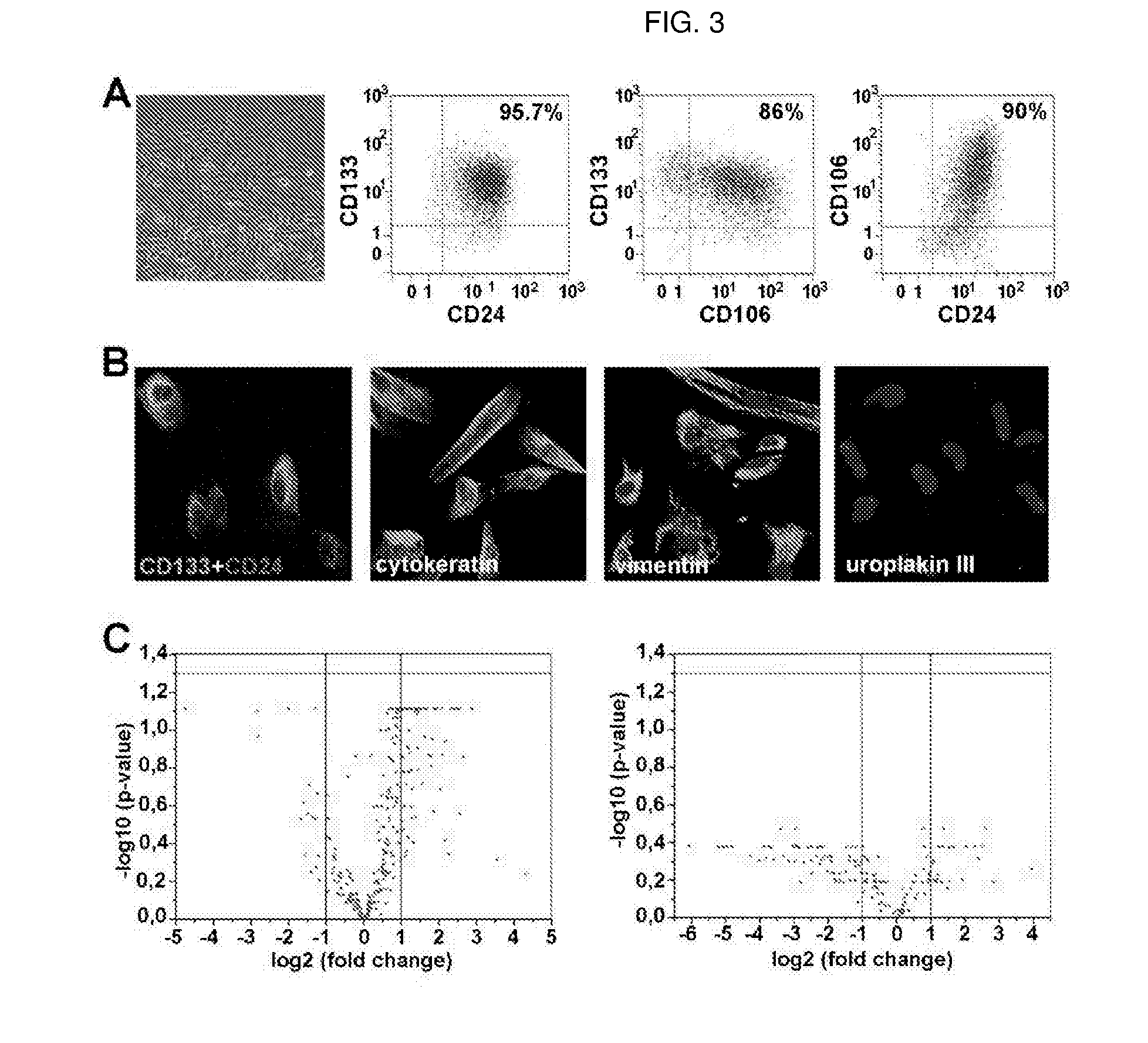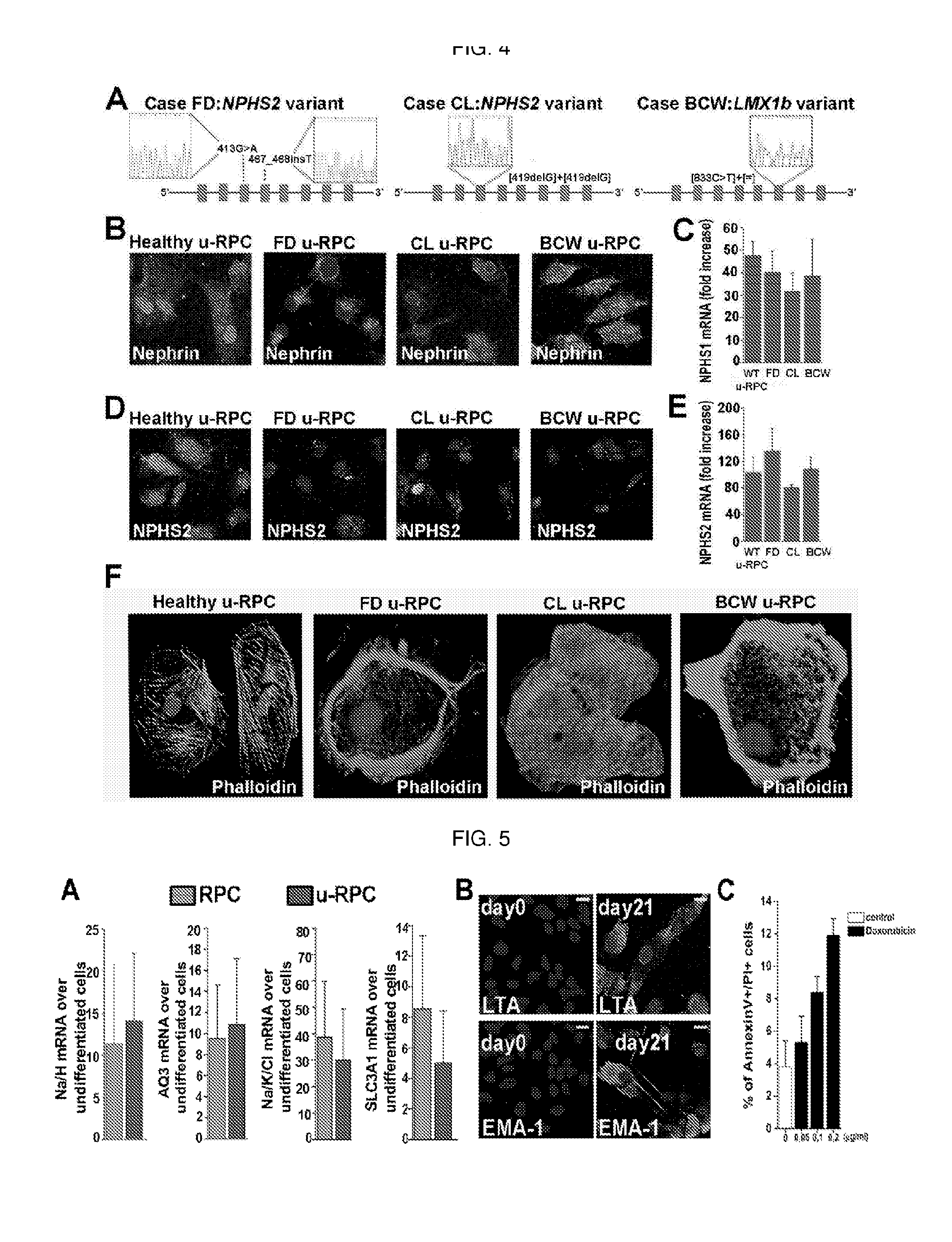Method for the isolation, purification and amplification of renal progenitors cd133+cd24+ from the urine of patients suffering from renal diseases
a technology of renal disease and urine, applied in the direction of kidney/kidney cells, artificial cell constructs, biochemical instruments and processes, etc., can solve the problems of low efficiency and purity of purified stem or progenitor populations, methods described to date, and not well characterized specific populations, etc., to achieve high purification, easy to use, fast and efficient
- Summary
- Abstract
- Description
- Claims
- Application Information
AI Technical Summary
Benefits of technology
Problems solved by technology
Method used
Image
Examples
example 1
Urine Samples
[0051]A total of 79 urine samples were collected from 47 pediatric patients aged between 0 and 17 years old and suffering from various glomerular diseases. As a control, urines were collected from healthy children aged between 1 and 13 years (Table 1 in FIG. 1).
example 2
Isolation, Purification and Amplification of Renal Progenitors
[0052]The urine samples were centrifuged at 1500 rpm for 10 min, once the supernatant was removed, they were subjected to a second centrifuge in PBS 1× at 1500 rpm for 5 min (see flowchart in FIG. 2). Finally, after removing the supernatant, the cells were re-suspended in EGM-MV 20% FBS. Most of the cells in the urine did not attach to the culture plate and were eliminated at the change of the medium after 6 days of culture. Following plating, only a few cells give rise to a compact and uniform cluster. Since bacterial contamination is a frequent phenomenon in this type of samples, all the cultures obtained were evaluated in PCR for the presence of the bacterial 16S ribosomal RNA gene. Subsequently, the PCR product was subjected to sequencing and comparison of the sequence of the 16S ribosomal RNA gene with those present in Genbank showed a homology of 95% with bacteria belonging to the group of Enterococci. A specific mi...
example 3
Characterization of Renal Progenitors Isolated from Urine
[0053]Cells isolated from the urine, according to the method of the invention, show a morphology similar to that of the renal progenitors CD133+CD24+ isolated from kidney tissue (FIG. 3A), and express with high intensity the surface markers characteristic of renal progenitors such as CD133, CD24 and CD106, as demonstrated after flow cytometric analysis, usually in percentages higher than 90% (FIG. 3A). These results show that the isolation method according to the present invention allows obtaining, with high purity, an extremely homogeneous population of renal progenitors CD133+CD24+. Furthermore, after confocal microscopy analysis, the cells isolated from the urine also showed to be homogeneous for the expression of the markers cytokeratin and vimentin (FIG. 3B), while they do not express uroplakin III, a marker characteristic of urothelium, demonstrating, therefore, the renal origin of the cells isolated from the urine (FIG....
PUM
| Property | Measurement | Unit |
|---|---|---|
| time | aaaaa | aaaaa |
| time | aaaaa | aaaaa |
| purity | aaaaa | aaaaa |
Abstract
Description
Claims
Application Information
 Login to View More
Login to View More - R&D
- Intellectual Property
- Life Sciences
- Materials
- Tech Scout
- Unparalleled Data Quality
- Higher Quality Content
- 60% Fewer Hallucinations
Browse by: Latest US Patents, China's latest patents, Technical Efficacy Thesaurus, Application Domain, Technology Topic, Popular Technical Reports.
© 2025 PatSnap. All rights reserved.Legal|Privacy policy|Modern Slavery Act Transparency Statement|Sitemap|About US| Contact US: help@patsnap.com



